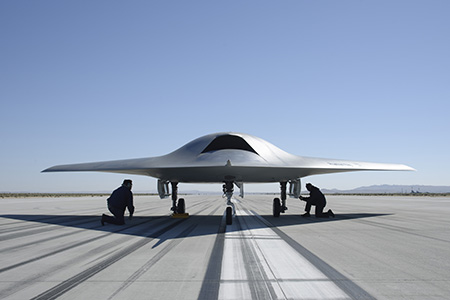 |
| BBC video screencap: UAV Cloud |
Concerns about the summer heat up to 50C at the
2022 Qatar World Cup for players and fans have challenged engineering imagination and creativity. One idea recently launched is an
Unmanned Aerial Vehicle (UAV) filled with helium and built of light carbon material, powered by four solar-powered engines for maneuvering between the Qatar World Cup stadium and the sun to provide shade. The idea was presented by Saud Abdul Ghani, head of the mechanical and industrial engineering department at
Qatar university, BBC
reports. The "artificial cloud" could be flown over the stadium by remote control to provide shade to players and spectators.
The UAV cloud hovers like a remotely controlled helicopter over the football ground, shielding it from direct sunlight and providing a favorable climatic environment. The UAV is also programmed to continuously change its shielding position according to the prevailing east-to-west path of the sun. Commercial models, Ghani said, could be used at beaches and car parks, perhaps even fetched by mobile phones.
Qatar Camel Race Robot JockeysIt's not the first time Qatar robotic ideas make headlines. In 2005 the first successful official race featuring
robotic jockeys was conducted in Qatar after the Emir of Qatar, Hamad Bin Khalifa Al-Thani, banned child jockeys and directed that, by 2007, all camel races would be directed by robotic jockeys. Initially, the idea of using robots was proposed by the Government of Qatar, and as a result, the
RAQBI Center located at Al Shahaniya, 30 Kms from Doha city. was founded. The different models allow camel owners to remotely whip and steer the camels from the sidelines and can also be equipped with GPS and a heart-rate monitor to assess performance. However, using electric shocks on a camel is not permitted during races and anyone caught doing so can face up to three months in prison.
Shock JockeysIn January 2011 press
reported Dubai Police arrested three men for allegedly selling robotic camel jockeys with an illegal electric shock feature. The suspects were reportedly selling their "shock jockeys" for up to $ 8000. The cost of an ordinary robotic camel jockey is between $ 220-320.
CMU Qatar Robotics In 2004 at the invitation of Qatar Foundation,
Carnegie Mellon joined Education City, located in Doha, a unique center for scholarship and research for students from Qatar and 30 different countries. Carnegie Mellon Qatar offers undergraduate programs in business administration, computer science and information systems including
robotics.
The
Qatar Robotic Surgery Centre, QRSC, started
in 2009 has become one of the leading surgical training centres in the region by improving the quality of surgical care in Qatar. QRSC, a partnership between Qatar Science and Technology Park (
QSTP) and Hamad Medical Corporation (
HMC), provides robotic and non-robotic minimally invasive surgery training. QRSC is a collaboration with Imperial College London, and provides three Da Vinci-brand medical robots, a simulation operating theatre and a "tele-mentoring" suite.












